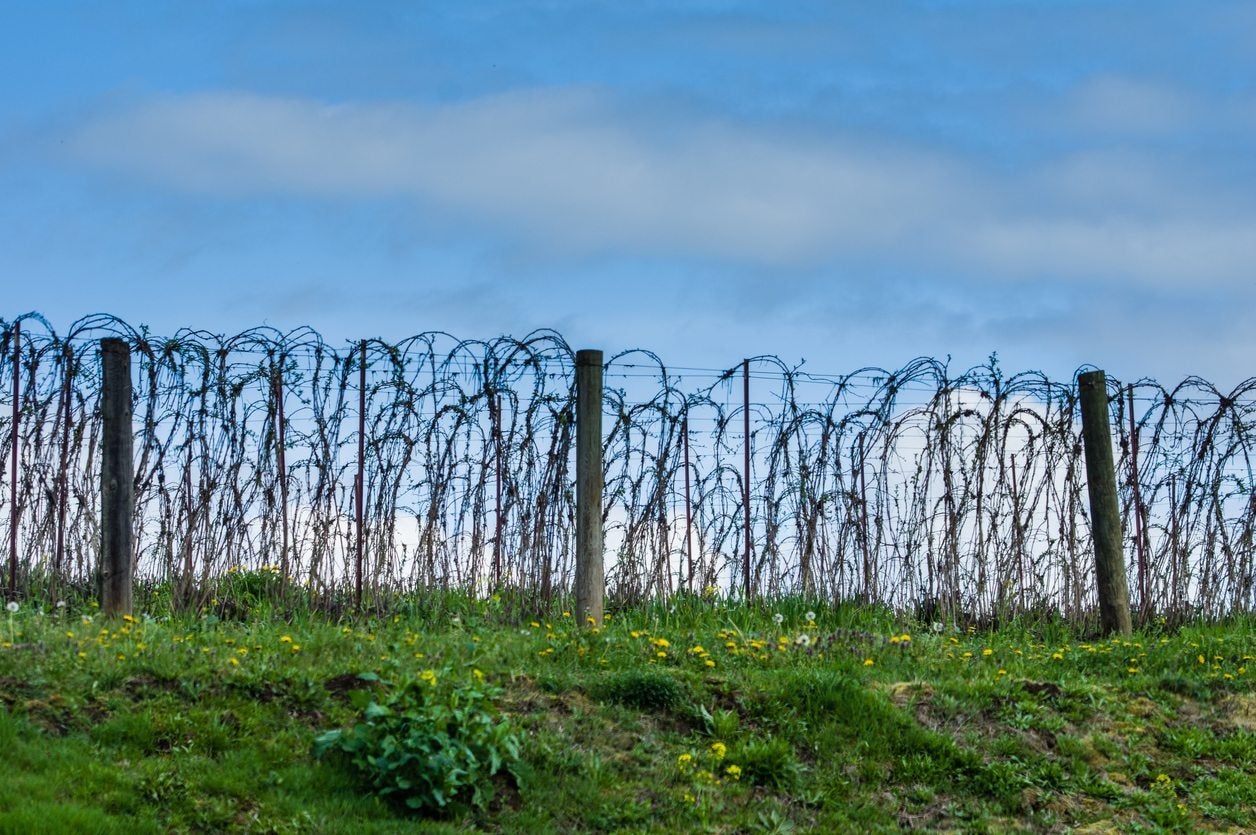Growing Raspberries On A Trellis: Training Trellised Raspberry Canes

Of course, you can grow raspberries without any support, but a trellised raspberry is a thing of beauty. Growing raspberries on a trellis improve fruit quality, makes harvesting much easier, and reduces the incidence of diseases. Without training, the raspberries tend to grow every which way, making harvest and pruning a chore. Got your attention? Read on to find out how to trellis raspberry plants.
How to Trellis Raspberry Plants
Training raspberries to grow up a support doesn’t have to be complicated. A trellised raspberry plant may be composed of posts and twine. Space the posts around 15 feet (5 m.) apart and then support the canes with the twine. Of course, this should be viewed as a temporary trellis system and because the plants are perennials, it might be better to build something more permanent from the get-go. For the home garden, a two-wire permanent trellis is sufficient. You will need two wooden posts that are 3 to 5 inches (8-13 cm.) across and 6 to 8 feet (2 m.) in length. Set the posts 2 to 3 feet (61-91 cm.) into the soil and space them 15 to 20 feet (5-6 m.) apart. At or near the top of each post, nail or screw a 24 to 30 inch (61-76 cm.) long crosspiece. Space the wires 2 feet (61 cm.) apart and 3 to 4 feet (1 m.) above ground. In the spring after pruning, gently tie the raspberry canes to the support wires using twine or cloth strips. This will allow for better light penetration into the center of the plants, which will promote shoot development and, thus, a larger yield of berries. Growing raspberries on a trellis in this manner makes harvesting so much easier and facilitates pruning since trellising encourages new cane growth in the center rather than just along the outer edges of the hedgerow. Plus, some varieties such as the summer bearing ‘Dorimanred’ really require trellising to support their trailing growth habit.
Gardening tips, videos, info and more delivered right to your inbox!
Sign up for the Gardening Know How newsletter today and receive a free copy of our e-book "How to Grow Delicious Tomatoes".

Amy Grant has been gardening for 30 years and writing for 15. A professional chef and caterer, Amy's area of expertise is culinary gardening.
-
 Looking For Plants To Give You The Soft And Fuzzies? Try These 5 Fuzzy Leaf Plant Options
Looking For Plants To Give You The Soft And Fuzzies? Try These 5 Fuzzy Leaf Plant OptionsLovers of texture, drama, silver foliage and tactile plants will adore these special sensory garden additions. These fuzzy leaf plant options will leave you all aglow
By Susan Albert
-
 Get Ready For A Summer Of Hummers! Grow These Full Sun Hummingbird Plants and Flowers
Get Ready For A Summer Of Hummers! Grow These Full Sun Hummingbird Plants and FlowersIf you’re lucky enough to enjoy a sunny backyard, make sure you are maxing out on your pollinator opportunities and grow these full sun hummingbird plants and flowers
By Tonya Barnett